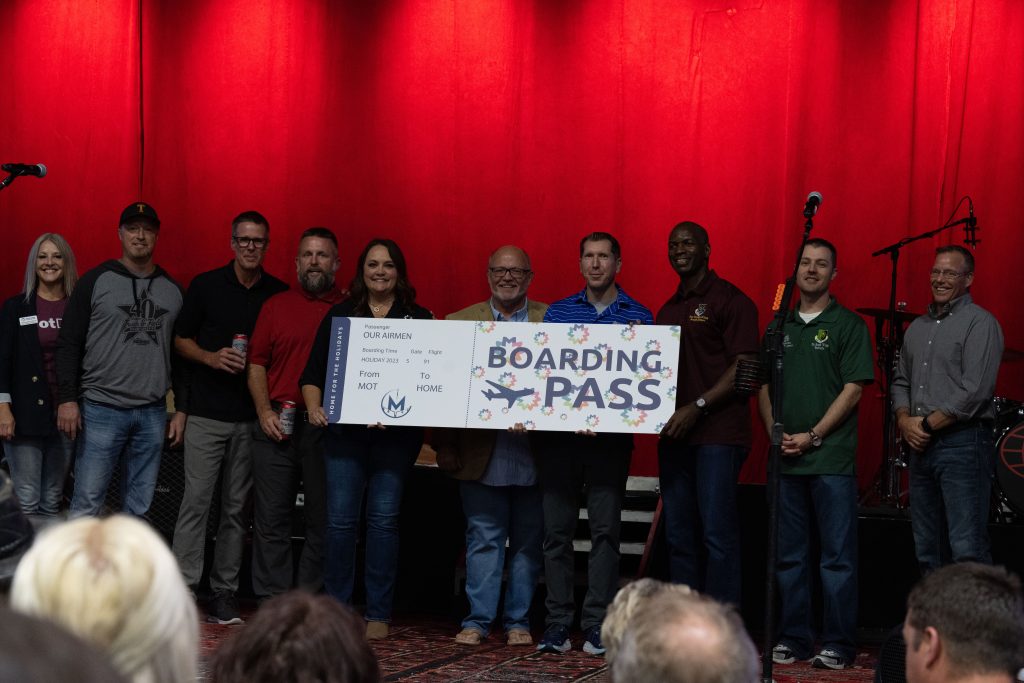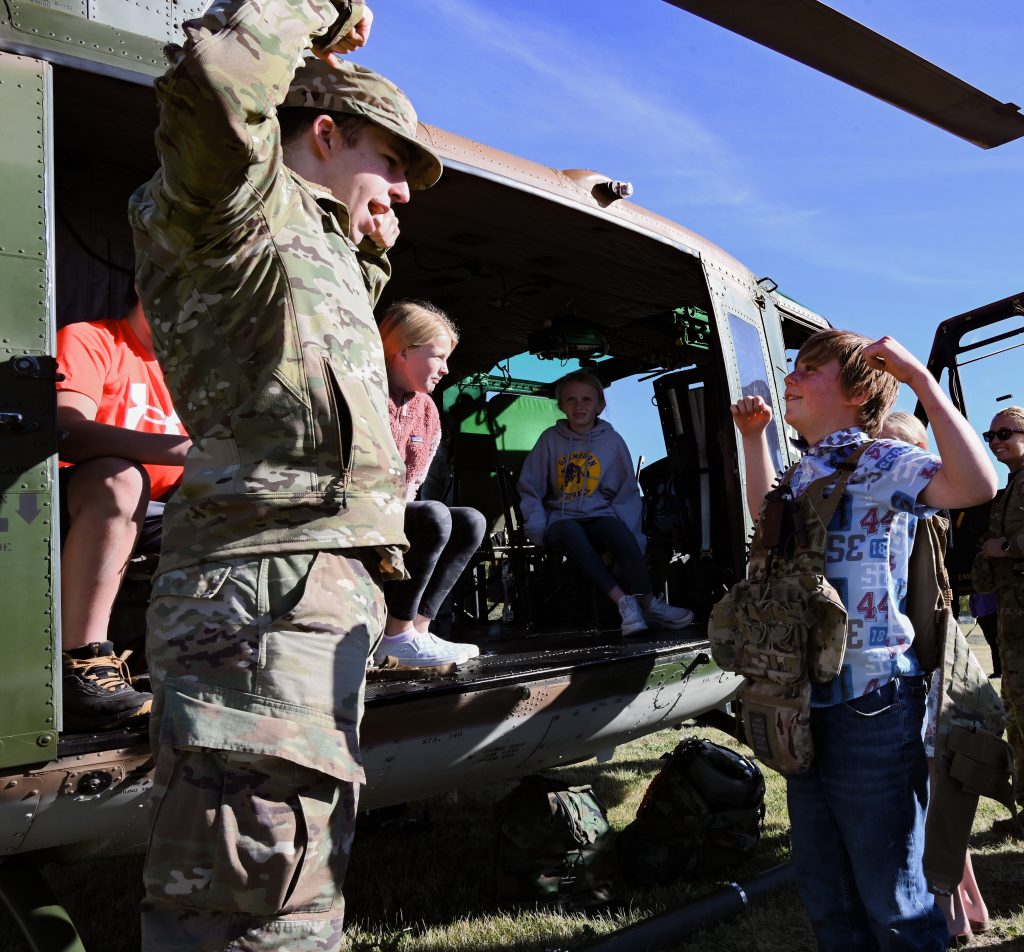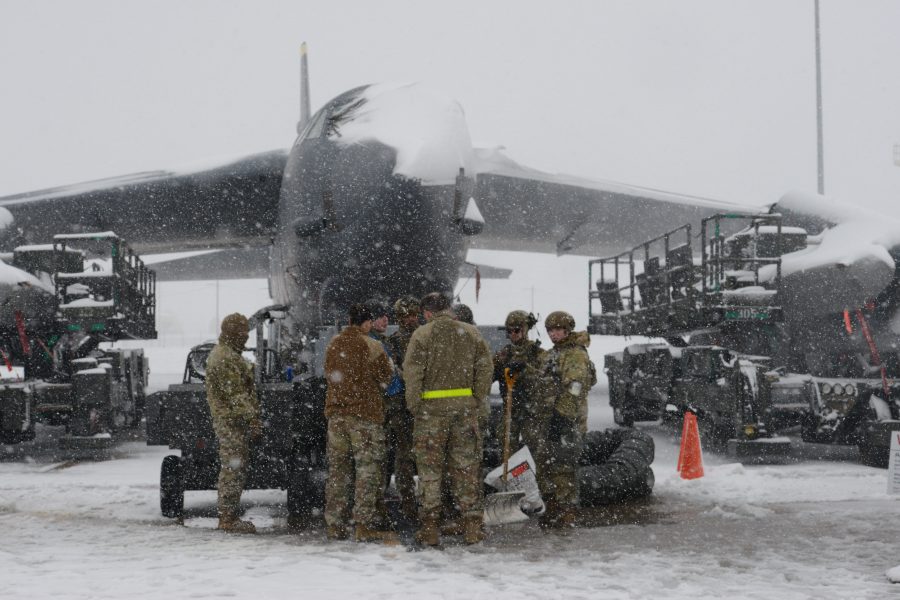Minot Air Force Base, N.D., holds a unique position among Air Force installations. As the only base to host both bombers and intercontinental ballistic missiles, it is crucial to the service’s nuclear mission. But it is also isolated, hours away from major population centers and located in the far north of the U.S., creating long and cold winters. Airmen staffing the nation’s nuclear forces also have to put in long hours or even days on the job to be ready at a moment’s notice.
For years, the base has been tagged as one of the least desirable for Airmen to be stationed. Minot leaders are well aware of the stigma and are working to ameliorate some key quality-of-life concerns, they said recently.
“Last week we got about 10 inches of snow. Currently it’s about 18, 20 degrees outdoors with a wind chill of about 8 degrees or so, and we’re still out there doing the job,” Col. Kenneth C. McGhee, the commander of the 91st Missile Wing, said Oct. 30 during a virtual AFA Warfighters in Action event. “Our Airmen are some of the finest American citizens that you will ever meet. … And so every single Airmen, we put our arms around, and there are challenges that we need to make sure we’re taking care of them.”
Compounding those challenges is the fact that many of those Airmen are young—McGhee said two-thirds of the base’s security forces are below the age of 26. He added it is not uncommon for two second lieutenants to be tasked with manning a launch control center—the underground bunkers where missileers work in 24-48 hour shifts on alert to launch ICBMs.
Feeling isolated can be particularly dangerous for young service members, who face a higher risk of suicide. Col. Daniel S. Hoadley, the commander of the 5th Bomb Wing, said the civilian community of Minot, N.D., recognizes the possibility of loneliness and has worked hard to address it.
“I’ve been a lot of places in my 23-year Air Force career and never experienced a level of community support to the level that we see here at Minot. They truly go the extra mile to support our Airmen,” said Hoadley. “And I think that they really understand that for a lot of our young folks … are a long way from home and this is their first assignment.”
As examples, Hoadley cited “Military Appreciation Days” hosted by the North Dakota State Fair and the local Minot State football team offering free admission for military members, as well as the “Home for the Holidays” program, which raises money from the local community to send more than 100 Airmen home for Thanksgiving or Christmas.

Travel is a common concern among Minot Airmen, Hoadley acknowledged, and not just for the holidays. Families who need advanced medical care often need to travel for hours to cities like Bismark (120 miles away), Fargo (280 miles), and even Minneapolis (500 miles) to see specialists.
“It requires them to take a number of days off of work. From a financial perspective, there’s a burden there,” Hoadley said. “Certainly the Air Force is doing our part to reimburse them for that.”
Families also face challenges with child care, particularly with the unique work schedules among ICBM crews. It’s standard for missileers and security forces to be out in the sprawling missile fields for an entire week at a time, McGhee noted.
“We have what’s called missile care, where we do have some providers who the crew members and our families are able to leave their children with family care providers for a period of up to seven days at a time,” McGhee said. “That is expensive and carries a significant burden to those family members, and so sometimes that becomes a challenge and we’re always trying to find different ways to alleviate that challenge.”
The Minot community also supports itself with the family child care program, which trains and pays military spouses to watch other Airmen’s children in their own homes.
“We trade off like every other week with [Joint Base Elmendorf-Richardson, Alaska] on being the number one FCC program in the Air Force,” Hoadley said. “So that’s something that’s definitely a highlight up here.”
Still, both wing commanders noted that capacity remains an issue. While the base moved to expand its child development center a few years ago, staffing is a struggle.
“One thing we can’t organically do is make more people come to work here,” McGhee said. “So we’re trying to find unique ways, different programs in order to increase the number of child care workers to support our men and women every single day.”
“We are putting as many bonuses and hiring incentives as we can against filling the roles there and really just trying to create an environment where individuals enjoy coming to work every day,” Hoadley added.
Ultimately, however, there is only so much Minot can do on its own.
‘We’ve also been engaged with the local civic leaders and political leaders inside of the state of North Dakota to amplify this point,” Hoadley said. “And frankly, it’s a shared challenge. I mean, as they had their legislative session this year, one of the primary topics of discussion is the impact of child care and the role it plays in economic capacity for the state. Whether you’re trying to run a business or provide nuclear deterrence, child care is a key enabler.”

